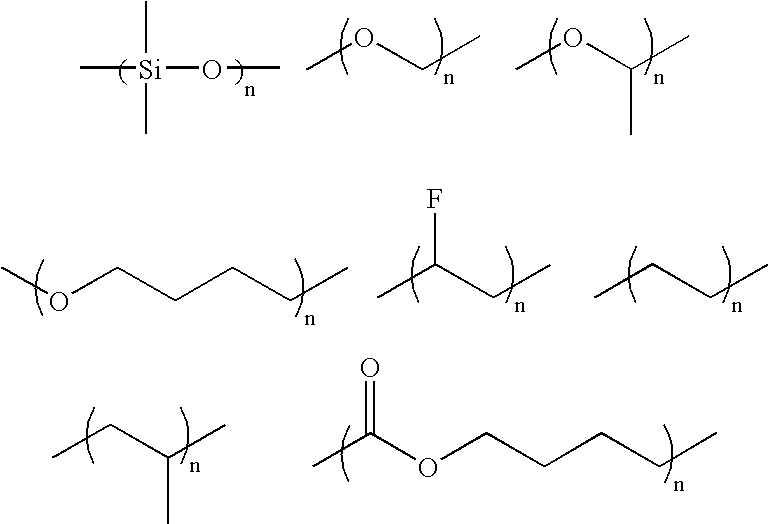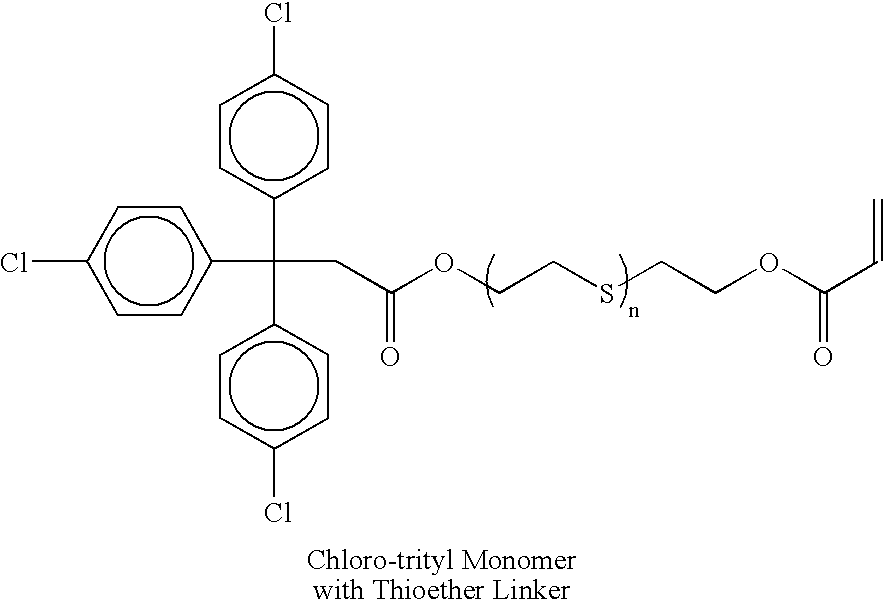Index Contrasting-Photoactive Polymerizable Materials, and Articles and Methods Using Same
a technology of photoactive polymerization and indexing, applied in the field of indexing photoactive polymerization materials, can solve the problems of less optimal characteristics and capabilities of holographic media for recording and/or reading data
- Summary
- Abstract
- Description
- Claims
- Application Information
AI Technical Summary
Benefits of technology
Problems solved by technology
Method used
Image
Examples
examples
[0128]Chloro-trityl sorbitol (e.g., Monomers 1 and 2) above may be made by using a DCC coupling reaction. First, a slight excess of an acrylate acid (see compound above with R1 and R3 groups) is used relative to the primary hydroxyls on the sorbitol. The primary hydroxyls may be preferentially reacted over the secondary hydroxyls. Column chromatography may be used to purify the first resultant diacrylate. Then, a second DCC coupling reaction may be used to react trityl propionic acid (see compound above with R2 groups) with the resultant acrylate from the first DCC coupling reaction. Again, column chromatography may be used to purify the resultant diacrylates from the second DCC coupling reaction.
[0129]Other chloro-trityl monomers illustrated above (e.g., chloro-trityl monomer with thioether linker) may be prepared by similar methods with appropriate modifications known to those skilled in the art.
PUM
 Login to View More
Login to View More Abstract
Description
Claims
Application Information
 Login to View More
Login to View More - R&D
- Intellectual Property
- Life Sciences
- Materials
- Tech Scout
- Unparalleled Data Quality
- Higher Quality Content
- 60% Fewer Hallucinations
Browse by: Latest US Patents, China's latest patents, Technical Efficacy Thesaurus, Application Domain, Technology Topic, Popular Technical Reports.
© 2025 PatSnap. All rights reserved.Legal|Privacy policy|Modern Slavery Act Transparency Statement|Sitemap|About US| Contact US: help@patsnap.com



